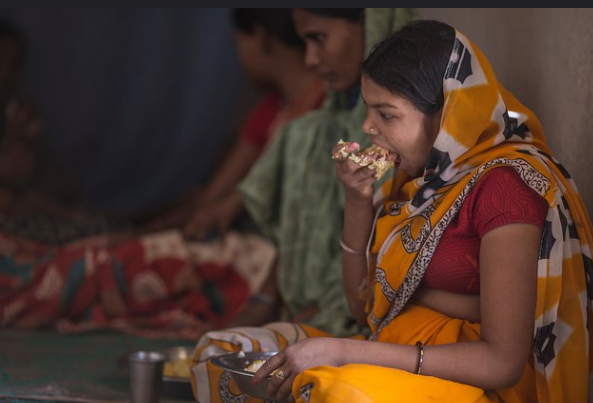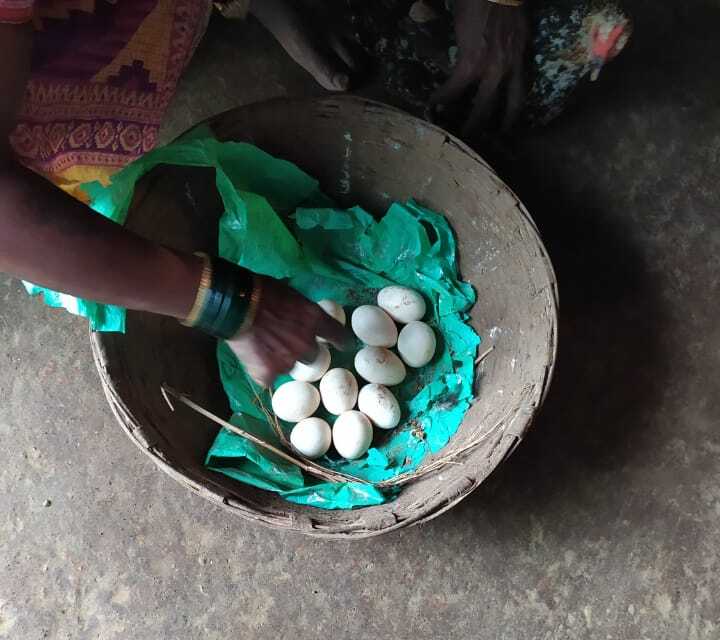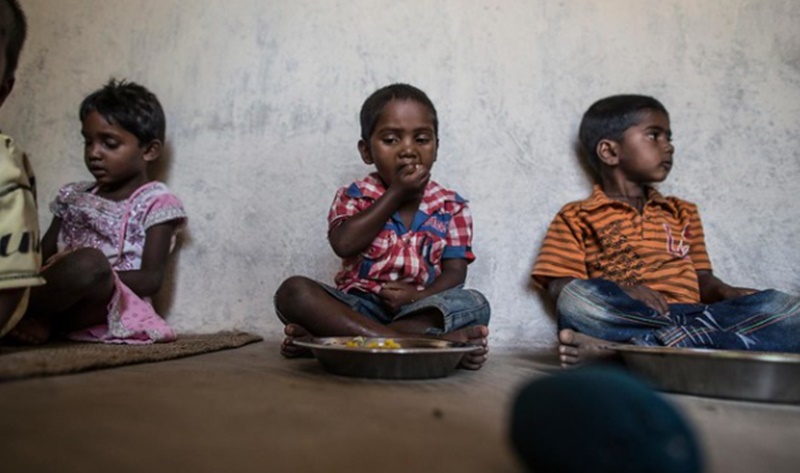Stop compulsory food fortification: Health activists write to FSSAI
The Indian government is considering ‘mandatory’ food fortification in the country. Several health experts have written to FSSAI calling the decision ‘a blanket approach’ to meet the complexity of malnutrition in the country. Details here.


The government has started distributing fortified rice through the mid-day meal scheme and ICDS. Photo: poshan.ifpri.info
At least 170 people and organisations, including medical experts and nutritionists, have today, on August 2, written a letter to Ashok Kumar Mishra, the assistant director of Food Fortification Resource Centre, department that regulates food under the Food Safety and Standards Authority of India (FSSAI). The letter urges the department to scrap its decision to mandate synthetic fortification of foods such as rice with iron.
“Fortification with one or two chemicals to address one nutrient deficiency will be limited by another nutrient deficiency. For e.g. haemoglobin synthesis requires not just iron but good quality proteins and many other micronutrients as well … this proposal for mandatory fortification citing RDA [Recommended Dietary Allowances] for micronutrients while not taking into account the shortfall in macro nutrients of the population, is specious,” reads the letter dated August 2.
Debal Deb, ecologist and traditional rice conservator, mentioned in the letter: “It is ridiculous (sic) that the government is promoting polished rice, which has lost a lot of its nutrition on the one hand, and talks about chemical fortification on the other hand.”
In India, fortification has been made mandatory for some micronutrients. Last year, FSSAI considered it mandatory to fortify edible oil with vitamin A and D ‘so that people of India can enjoy better immunity with good health’.
Also Read: To fortify milk, or not to fortify … the debate goes on
The country is also considering ‘compulsory’ fortification of rice with Vitamin B12, Iron, and Folic Acid from 2024 to address malnutrition and anaemia crisis in the country.
The letter dated August 2 also highlighted that since April, the government has also started distributing fortified rice through the mid-day meal scheme and Integrated Child Development Scheme (ICDS) programme citing widespread nutritional deficiencies. The central government has also initiated a three-year pilot scheme on rice fortification and supply via public distribution (PDS) in 15 districts across the country.
However, experts state that the chemical or synthetic food fortification is detrimental to health.

‘Fortification can lead to toxicity’
In the letter, the signatories including Right to Food Campaign, a non-profit working for food rights, and the Alliance for Sustainable and Holistic Agriculture, an informal network working to strengthen food diversity and nutrition, pointed out that the mandatory fortification is detrimental to health and “it would bring socio-economic impacts such as market shifts in favor of large corporations, loss of livelihoods for small and informal players, monocultures in diets and reliance on packaged foods.”
Experts also pointed out that in undernourished populations such as India’s, the key problem is protein inadequacy as a result of monotonous cereal-based diets along with low consumption of vegetables and animal source foods such as meat, poultry, eggs, and fish. The fortification can lead to toxicity, including gut inflammation, they say.
“Evidence supporting fortification is inconclusive and certainly not adequate before major national policies are rolled out,” Veena Shatrugna, former Deputy Director of National Institute of Nutrition, was quoted as saying in the press statement.

Is FSSAI’s move in favour of citizens?
In response to an earlier letter sent by civil society groups to FSSAI last year in November, the FSSAI said it sees fortification only as a complementary strategy to diverse diets.
The medical experts and nutritionists question the intentions of FSSAI as the latter has cited ‘industry-funded’ studies to ‘justify’ fortification on a national scale, ‘willfully’ ignoring conflict of interest since those very entities stand most to profit from such a policy.
“If FSSAI really saw fortification as a complementary strategy, then why is fortification mandatory while dietary diversity and other holistic approaches to malnutrition are optional,” asked the letter to FSSAI.
The letter also asserted ‘serious’ economic impacts on consumers and informal players like small rice millers, cold press oil mills, small farmers, and local enterprises who may not be able to make the heavy investments required.

The signatories called this move ‘a blanket approach’ to meet the complexity of malnutrition in our country. As per them, the simple and complete solution is to improve diets and food diversity such as inclusion of nutritious vegetables, millets, animal protein, dairy.
“… the Authority does not consider fortification to be exclusive of, or alternative to food diversity, but It doesn’t not seem like the FSSAI is promoting dietary diversification with the same energy or commitment as fortification,” reads the letter.
Moreover, projects like backyard poultry and livestock, home gardens could be ramped up to support local communities, farmers, households, and women’s collectives, for better nutrition, which are the best source of nutrition, even according to the FSSAI, the letter highlighted.

‘Waste of Rs 26 billion annually’
A new research paper, ‘Perspective: When the cure might become the malady: the layering of multiple interventions with mandatory micronutrient fortification of foods in India’, released on July 30, claims that the intervention of food fortification is ‘wasteful, ineffective and potentially harmful’ to human health.
The authors pointed out how fortification adds another intake layer of a chemical iron through fortified foods believing it may do good. This is in addition to the ongoing pharmacological iron supplementation as well as other voluntary iron fortifications, such as those of salt and manufactured food products. They also pointed out that this fortification policy ignores the role of a balanced and diverse diet for addressing the variety of nutritional problems.
The experts also warned that this policy is a ‘wasteful’ expenditure of more than Rs 2,600 crore (Rs 26 billion) annually on fortification of rice with iron in an attempt to reduce anaemia in India.

